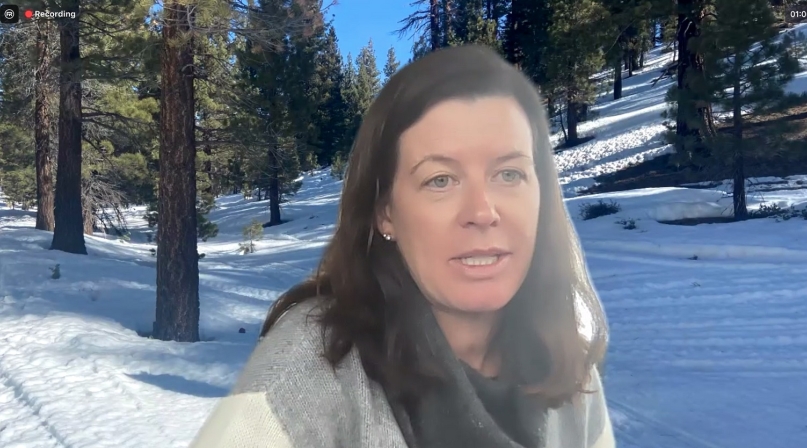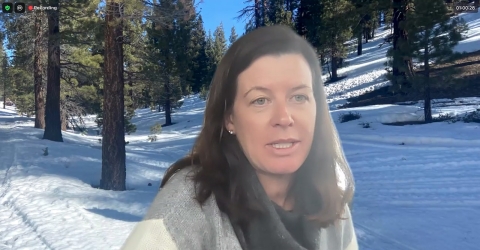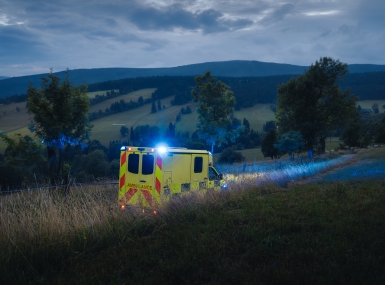Tourism boom stresses gateway counties

Key Takeaways
Perhaps new visitors to public lands didn’t see the “take only memories, leave only footprints” signs last summer because so many other hikers were blocking them.
A record year for public lands visits during the COVID-19 pandemic has prompted members in NACo’s Resorts, Tourism and Gateways Working Group to think about how the visitors who keep their economies running can also be a liability.
“We just saw people flood in,” said Eagle County, Colo. Commissioner Kathy Chandler-Henry. “We just saw such tremendous overuse” as remote work options allowed people to migrate west, temporarily. “We saw piles of human waste, some people living in dispersed camping [outside of a designated campground] that wasn’t supposed to be dispersed camping, we saw them on private lands, a lot of concerns about wildlife impacts.”
Noting that she had heard public lands counties characterized as benefitting economically only in its extraction industries like mining or drilling, perhaps that perspective may also apply to tourism.
“This led us to start thinking about outdoor recreation and tourism as an extractive industry,” she said. “For us, our industry is tourism and recreation, it’s not typically an industry that’s been associated with impact funds. I think we need to rethink how we’re going to preserve our economy which is based on clean air, clean water, preservation of the environment, wildlife, scenic vistas, all of those things that bring people here.
“This overuse will continue…with this ‘Zoomtown’ phenomenon. We need to figure out how to harness this industry that sustains us to protect our community and our workforce.”
Not too far south of Eagle County, Gunnison County, Colo. has been relying on its Sustainable Tourism & Outdoor Recreation (STOR) Committee to help mitigate some of the problems associated with outside visitors. The committee gathers a wide range of public and private, educational and commercial stakeholders from throughout the community to address recreational issues and coordinate volunteer efforts.
“When COVID hit, the work and cohesion of the group allowed us to have a pretty nimble response,” said Commissioner Jonathan Houck. “It was put in place well before COVID, but it was really key to how we’ve been able to deal with the pandemic.”
But some of the pandemic’s challenges to Gunnison County fell outside of the STOR committee’s bailiwick, because the number of outside visitors helped drive the county’s COVID infection rate to third in the state. The county banned second homeowners and tourists from visiting.
“It was controversial, it was a hard thing to do, but we did it because it was the best way to protect the county,” Houck said.
Gunnison County also brought federal land managers and tourism officials into the decision-making and public-messaging process.
Blaine County, Idaho, which also saw visitors as a liability, draws skiers during the winter to Sun Valley, but that also means early penetration by COVID carriers, and the county saw its first community spread on March 13.
The county and mayors created rules for visitors, including a mask mandate, dubbed “Mindful in the Mountains.”
“I thought it was a good way for people to know what the rules were when they came here, so we wouldn’t have any outside visitors unduly affecting our local population.
“We had a bunch of groups here for out of town and boy, this thing just blew up like wildfire, it wasn’t like your neighbor got it and another neighbor got it, this was like no, it’s all here, all at once. Maybe we could have put in some restrictions sooner, but I don’t know how that could have prevented 100-some odd people coming in from out of state for an event like that and telling them ‘No you can’t,’ when we really didn’t have any proof that anything was happening here to begin with.”
San Miguel County, Colo. gathered its communities and regional partners — counties and their health directors — together in what started out as a weekly “cocktail hour,” but it actually turned into a very active, effective and coordinated group,” said Commissioner Hilary Cooper. “Four of our counties share high alpine pass roads and as we saw spring wind down and recognized that we were going to have to open those up… we anticipated we were going to have significant traffic and we were able to coordinate with our federal agencies, put signage together and coordinate communication. We were able to do that because we were already meeting once a week and we had that trust built and that communication built.”
Mono County, Calif. also saw tension among locals, visitors and second homeowners .
“I think we’re still struggling with that,” said Supervisor Stacy Corless. “Our forest supervisor wanted to close down the forest, and where some people live, they couldn’t go more than a quarter mile from their front doors.
“From the start, every week it seemed like there was another recreation issue that was just punching us in the face.”
Working though Gateway Counties of Yosemite National Park, the affected counties were able to navigate the tricky balance of state restrictions, pressure from the Department of Interior to open the park and lodging and hospitality businesses that needed travelers to stay afloat.
“Our park superintendent worked hard to stave off the opening until we could coordinate with the state of California and advocate for limited lodging opening,” Corless said. “That was a big success.”

Attachments
Related News

CMS announces Rural Health Transformation Program funding
On December 29, the Centers for Medicare & Medicaid Services (CMS) announced $50 billion in awards over 5 years to all 50 states under the Rural Health Transformation Program.

U.S. House of Representatives passes SPEED Act and other permitting reform bills
On December 18, the U.S. House of Representatives passed the SPEED Act (H.R. 4776). The SPEED Act would strengthen county involvement in decision-making and make needed commonsense reforms to the federal environmental review process.

House Natural Resources Committee advances the Endangered Species Act Amendments Act of 2025
On December 17, the House Natural Resources Committee advanced the Endangered Species Act (ESA) Amendments Act of 2025 (H.R. 1897). The version passed by the committee adopted several changes from the initial bill and would address key county concerns by improving the implementation of the ESA. The legislation now awaits a floor vote before the whole U.S. House of Representatives.
